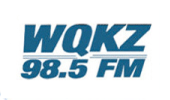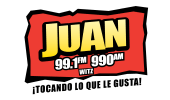Patoka Sportsman 11-16-19
Patoka Sportsman 11-16 & 11-17-19
The Indiana CheckIN Game system allows hunters and trappers to check in their harvested game from any device connected to the internet. You will receive a confirmation number that must be written down on a temporary transportation tag for the harvested game species (turkey, deer, and/or river otter). Be sure to check your information to ensure accuracy before submitting the check-in. Deer and wild turkey must be checked in within 48 hours of harvest, and river otters must be checked in within 24 hours. Have your customer ID (CID) and harvest information ready.
Do not re-enter the correct information if you have entered incorrect information into the CheckIN Game system; each submission is considered a harvested animal. Email your confirmation number, name, and changes that need to be made to [email protected]. To view all game that was previously checked in with the CheckIN Game system, you will need to set up an account through our online system. You can purchase licenses, check in game, complete your HIP registration, and make a donation through your account. Hunters still have the option of visiting traditional check stations where a confirmation number will be provided to hunters to place on their temporary transportation tag. There is also a phone-in option at 1-800-419-1326 for a $3 fee (Visa or Mastercard only).
County bonus anterless quotas have been reduced to a maximum of two in areas impacted by EHD.
Counties that had a county bonus anterless quota of three or four, have now been reduced to two. Counties that already had a county bonus anterless quota of two or fewer have not changed. The effects of the harvest and EHD will be evaluated after the season and additional changes may be made the following year if necessary.
The Special Antlerless Firearms Season is only allowed in counties marked in green on the county bonus antlerless map. These counties previously had a county bonus antlerless quota of four, but were reduced to a maximum of two.
The deer firearms license allows one deer to be taken with that license, and it must be a buck. If you want to take a doe with a firearm during the firearms season, a bonus antlerless license, resident youth combo hunt/trap license, deer license bundle, or lifetime license is required.The doe counts toward that county’s bonus antlerless bag limit for resident youth, lifetime, and bundle license holders. Some DNR properties have restrictions on bonus antlerless deer that can be taken.
Select Indiana state parks will close for four days in the coming weeks to allow for controlled deer management. The dates for the temporary closings are Nov. 18-19, and Dec. 2-3. The properties are: Chain O’Lakes, Charlestown, Clifty Falls, Fort Harrison, Harmonie, Indiana Dunes, McCormick’s Creek, Ouabache, Pokagon, Prophetstown, Shakamak, Spring Mill, Summit Lake, Tippecanoe River, and Whitewater Memorial state parks and Cave River Valley Natural Area and Trine State Recreation Area.
It’s estimated that one out of every three deer hunters who hunt from elevated stands will likely experience a fall during some point while hunting. Here are ten tips to help keep you safe while hunting from your elevated stand:
Always read and understand the manufacturer’s instructions, guidelines, and warnings before using a treestand, a safety harness, or any other type of stand accessory or equipment.
Partial body harnesses, like those that only cover the chest or go around the waist, should NEVER be used as treestand safety harnesses because they are not designed to evenly distribute the arrest forces that result from the fall over the trunk of your body. Using a partial body harness can lead to serious injury or even death if you experience a fall. Always use a Treestand Manufacturer’s Association (TMA) approved Full-Body Fall Arrest Harness System (FBFAHS) to be confident that the harness has been designed and tested to meet the stringent industry manufacturing standards set forth by TMA.
It’s never a good idea to try to rush into or out of your stand. When you rush, you may not be focusing completely on the task at hand, and you are opening yourself up to the possibility of an accident. While climbing, be sure that you are making slow, even movements and that you stay in proper contact with the tree or treestand with each movement. If you are hunting out of a ladder stand or an elevated blind with steps and a railing, always maintain three points of body contact with each step that you take.
Always use a hoist rope to raise your equipment you need into the stand after you have reached your desired height and after you have secured your body harness to the tree. Never climb a tree with your stand or climb your ladder with objects in your hands or on your back. A heavy backpack can change your center of gravity and can make you unstable as you try to climb your tree. Prior to exiting your elevated stand, be sure to lower your equipment to a location on the ground that does not interfere with your exit route down the tree, ladder, or stairs.
Always choose a tree that best fits the recommended dimensions from your stand’s manufacturer. Avoid selecting trees that are dead, unhealthy, crooked, excessively knotted, or that lean. Pay close attention to the timeframe your stand’s manufacturer recommends for leaving a stand in the woods and closely adhere to these recommendations. Be sure to clear debris from around the base of the tree to minimize your injury from a fall and to ensure you have a clear exit path when you are leaving the tree.
Always know your physical limitations and do not push yourself past them. If you are using a climber stand and you feel like you are high enough, stop climbing. If you do not feel that you have your full mental alertness to climb, like if you are excessively tired, or, if you ever feel unsure about a climb in any way, have a back-up hunting plan in place and consider a different hunting set up for that day.
If you are planning to hunt alone, notify a reliable person of your exact hunting location, providing an address or a map if help needs to find you quickly. Notify this person of when you are going to the woods and when you expect to leave the woods.
In the event of an accident, carrying a communication or emergency signal device like a cell phone, flashlight, flare, or whistle might mean the difference between life and death. Having the ability to draw attention to your location means that emergency workers may be able to pinpoint your exact location more quickly. Moreover, having a device that will emit a signal without your attention may be critical if you lose consciousness.
None of us want to think about the possible consequences of a fall from a treestand. However, failing to prepare for this scenario may leave you in a critical situation, even if your FBFAHS functions properly. Your FBFAHS is designed to keep you safe in the event of a fall, but, being in a hanging position for several hours can cause serious long-term physical problems or even death to any hunter, whether in bad or good physical condition and regardless of age. Always have a knife or cutting tool ready and available to you should you fall. After falling, first attempt to recover and return to your stand. If this is not possible, call for help immediately. If you must hang for an extended period, move your legs and arms by pushing against the tree or by some other method. This leg and arm movement helps to promote continuous blood flow throughout your body and helps to prevent possible cardiac arrest.
Carcasses of deer and other wild animals that are lawfully taken cannot be dumped in streams or other bodies of water. Dumping dead deer and other wild animals in a waterway is considered littering and is a criminal offense punishable by a fine. Rotting carcasses in a waterway can also affect water quality for those downstream. Carcasses should not be burned because this can cause air pollution. Carcasses shouldn’t be left in the open for scavengers and others to see without permission from the landowner. We recommend all discarded carcasses and unwanted animal parts be bagged, placed in your trash, and sent to a landfill.
The hunters for the hungry began on Oct. 1. We will have the same four processors involved. They include Sanders Processing, Ferdinand Processing, Ohio Valley Custom Deer Processing in English and Cannelburg Processing. If you legally harvest a deer and would like to donate to our Hunters for the Hungry, administered by the Dubois County Sportsmen’s Club, you can take it to any of the processors mentioned. You must donate the entire deer. If you donate more than once each time you donate your name will be put into a drawing to win a firearm donated by Dr. Greg Gordon at Jasper Optical Lab.
Call TIP if you see, hear or learn about poaching or another fish and wildlife rule violation. If your “TIP” leads to an arrest, you may receive as much as a $200 reward, and you can remain anonymous. Call 1-800-TIP-IDNR, 24 hours a day, 7 days a week. As of November 14 there have been 29,027 deer harvested statewide.




